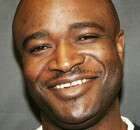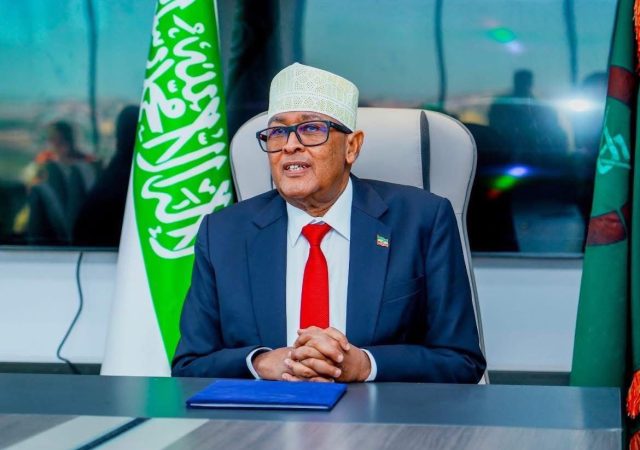
By Akinyinka Akinyoade
Introduction
Sudden changes in trajectory of annual population size defy explanation. Available statistics indicate that Nigeria’s population size rose steadily from about 40 million people in 1961 to over 100 million in 1988 when it abruptly dropped by almost 15 million in a space of two years in the absence of mass emigration, war, epidemics, or any other natural calamity that led to denigration of the country’s peoples. And in between 1999 and 2001, Nigeria miraculously gained over 10 million people (see figure 1) in the absence of mass immigration or baby boom. With no apparent explanations for the sudden huge losses or gains in population size, one factor that emerges is the reliability of population data, obtained through censuses, surveys, and deployment of other statistical techniques. Either the data collected pre-1988 was bad, or the ones collected post-1988 are deficient.
One important source of demographic data in Nigeria since 1789 is population census. Nigerian Censuses has been described as outcomes of tense political activities, and contributors to the debate often cite that census-taking in Nigeria has a history of political controversy and mutual ethnic mistrust (see Obono and Omoluabi, 2014; Diamond 1988). In this study, Nigeria’s history of political controversy is deeply examined. Using population data obtained from national and international sources, colonial records, in-depth interviews, and review of extant literature spanning 140-year period (1866-2006) we chart the course of census-taking in Nigeria since late 18th century. Reliability of results of various censuses are assessed based on methods of data collection, analysis, political interpretations, and ultimately the acceptability for planning purposes. Conclusions are made to highlight how successes can be built on and how deficiencies can be avoided in conduct of future censuses.
Generally, Nigeria’s census experiences are so fascinating and instructive as nearly all census results have been classified as not true or unacceptable (Ahonsi, 1988). Census figures are immediately contested as soon as they are announced, not because they acutely departed from laid down preconditions of census-taking but because they generated ethnic wrangling on sharing of the national cake (Okolo, 1999; Bamgbose, 2009; Ahonsi, 1988; Morah, Adekunle and Adekunle, 1981). The ever-increasing public awareness of the political and financial implications of census results to sub-national units, post-independence census results have been prone to controversies, however systematic its planning and execution. The question remains, how can population factor be de-emphasised in Nigeria’s socio-political terrain given that the population factor has been entrenched in the revenue sharing formula for decades. Such impression recurring for more than a century of different exercises serve as a justification to examining the history of population counts in pre-, colonial, and post-colonial Nigeria.
This paper highlights factors that contributed more to the errors observed in the reported figures by unmasking turning points where errors and doubts were wittingly or unwittingly introduced, and how these cemented statistical discontent from one group to the other. Nigeria’s census history since 1866 shows that fifteen partial and total attempts have been made, with varying degrees of success. In this study we describe the conduct of successive censuses and how officials responsible sought to overcome immediate past and/or cumulative deficiencies with the aim of getting more accurate data in any upcoming census. The 1991 census is highlighted as a case study in this regard. In the end, it is observed that while no census can be perfect, there had been intense focus on errors and weaknesses raised by politicians and analysts of different persuasions, rather than strengths of the exercise. Government administrators and politicians who are responsible for using population figures for development planning are the first to reject it; technocrats that contributed to the design of the first three national development plans also noted that population policy was not necessary in the five-year plans in the 1970s till mid-1980s. An important question remains on what to do when the size of population that is to be planned for is unknown.
Estimates and actual populations counts in pre-colonial and colonial times
Operationally, census is defined as the process of ‘collecting, compiling and publishing demographic economic and social data pertaining, at the specified time to all persons in a country or delimited territory’ (Shryock and Siegel, 1973: 15). Implementing this definition in Nigeria has been fraught with problems.
In the prelude to a census exercise, six major activities are required which include: enumeration area demarcation (EAD); publicity; questionnaire design; selection and training of census personnel; pre-testing of questionnaires; and selecting appropriate method of data collection (Okolo, 1999). For reasons of development planning, population growth rate derived in-between censuses can be related to the economic growth rate, helpful for the prediction of job creation potentials. For instance, Dr Djunaedi Hadisumarto (personal interview, BAPPENAS Jakarta March 2010) gave an economic justification for reliable intercensal statistics to underline how crucial population statistics is to development planning: “…it has been officially estimated that an annual GDP growth rate that is one unit higher than annual population growth rate represents creation of 100000-200000 jobs per annum”. Thus, population growth rate higher than GDP rate results in unemployment. In addition, relative rates of growth of the populations of the various components of a country is useful for development planning such as housing needs, estimating proportion of population of voting age, and revenue allocation for sub-national units; the latter being the bane to acceptability of census results in Nigeria (Afolayan, 1982). As simple as the population factor sounds, the bigger the complexity it has brought to governance and development planning of Nigeria.
Census-taking in Nigeria
The first known population figure recorded in Nigeria is traced to documents of one Captain Adams an American sailor who estimated population of Lagos to be 5000 in 1789 (Aluko, 1965). More estimates were to follow in 1815 (11000), in 1855 (20000), and in 1861 (30000) for British-occupied Lagos. The technical basis on which these figures were obtained remain unknown, and there is a contention as to when the first real population count or census took place. Makinwa (1985) asserted that the first real census took place in 1866 and covered only the Lagos area, but Aluko (1965) noted that despite the 1863 census ordnance that compelled the 1866 exercise, figures for 1866 and 1868 remained mere estimates and that the first real count was in 1871 which yielded 29000 (1000 less than that of 1861). In this study, 1871 is used as base date for census-taking in Nigeria as many scholars converged that from this point the British tradition of taking censuses in year ending with figure ‘1’ at decade interval was adopted. Available records showed Lagos population fluctuated in the early stages: 37000 in 1881, 33000 in 1891, 42000 in 1901, and 74000 in 1911 .
The merger of Lagos colony with other communities in protectorate of Southern Nigeria in 1906 led to the spread of census-taking to the whole of what was then known as Southern Nigeria in 1911. But the exercise was partial in that house-to-house count only took place in 11 main ports of the south (including Calabar, Bonny, Opobo, Degewa and Brass). Beyond the ports, hinterland, population estimates were derived for the rest of the southern provinces. For the Northern Protectorate, Aluko (1965) and Bamgbose (2009) maintained that census-taking followed the simplest ever imagined procedure at the government house in Zungeru where a guess was made and estimate made on a sheet of paper.
Amalgamation of the Southern and Northern protectorates into the federation of Nigeria by Lord Lugard in 1914 provided impetus for a national census in 1921. This made population enumeration to become much wider in scope, more elaborate and first in the series of systematic attempt at nationwide decennial census (Olusanya, 1989a). The 1921 census covered the whole of Nigeria in two ways: township census conducted on 24 April 1921 covering 13 townships; and provincial census spread over a two-month period from March to May 1921 (Okolo, 1999). A relatively high degree of accuracy was accorded the townships census (given a 5% margin of error); data collected in the provincial and rural areas was given a larger margin of error due to vigorous dislike many tribes showed to enumeration, and shortage of European staff aftermath World War 1. Thus the overall result was compensated for by additional 5% of figure to townships and 10% to other areas (Aluko, 1965). Without this compensation, Nigeria’s population stood at 18.36 million (South 8,371,000, North 9,998,000), with adjustments rose to 18.72 million people (Okolo 1999; Aluko 1965).
In 1931, another attempt was made to enumerate the whole country; actual counting of persons took place only in Lagos and five other townships, in 201 villages in Northern Nigeria, and for all foreign population in the country at the time. The exercise was hampered by the world-wide economic depression that began in the late 1920s, and locust invasion in many areas of Northern Nigeria. Also, three years earlier, a poll-tax introduced in the Eastern provinces led to rioting in Aba, Onitsha, Owerri and Calabar for fear that it might be extended to women. In the riot-affected areas, population estimates were derived from existing tax returns and records (Okolo, 1999). It did not help matters later that census figures for other areas were estimated based on tax returns and records which justified fears held in the Southeast in subsequent census exercise organized by the colonial administration.
At this time in Western Nigeria, administrative officers took personal interest in the census of Lagos colony, and in the Egba, Ibadan and Owo Divisions where intensive enumeration was undertaken of the Provinces of the Southwest. In 1931, the population of the Southern Provinces was given 8,493,000 and the Northern Provinces 11,435,000. Looking at the total figure, it appears that there was little growth in population between 1921 and 1931. Yet if we consider the disruption in the planning and execution of the census exercise, coupled with administrative difficulties, the lack of money, and the scarcity of qualified personnel, grounds for population underestimation especially of the south (combination of east and west) had been prepared. The Government Statistician summed up his assessment that census figures are slightly defective (5% underestimation) in the Northern Provinces and much in defect (up to 20% underestimation) in the Southern Provinces, thereby confirming an impression that the 1931 census was a gross under-estimate for Southern Nigeria (Aluko, 1965; Orubuloye, 1989b).
Particularly for Lagos, Mr. H.N. Thompson, officer in charge of the 1931 census submitted that:
There is no doubt that the entire Lagos census has been more or less inaccurate, and the reasons for this are not far to seek. Census taking depends for its success above all, on the willing co-operation of the people counted, and that co-operation is extremely difficult to obtain in Lagos.
One can conclude that between 1866 and 1931, censuses did not meet all the required characteristics (individual enumeration, universality, simultaneity, and defined periodicity) as actual enumeration were conducted only in a few places due to reasons aforementioned. It is at this point in 1931 that the problem of skewed nature of internal population distribution reared its head due to a host of technical and administrative errors. Here laid the foundation of larger population estimates for the North, which formed the bedrock or fault line in arguments for or against figures on population distribution of Nigeria in subsequent exercises.
The occurrence of World War II (WW II) led to the skipping of 1941 census in Nigeria and by 1946, MacLeod-Smith observed that:
No very prolonged study of existing Nigerian statistics is required to show that they are entirely inadequate for the purpose of large scale development planning. We do not even know what the population of the country is…The complete lack of adequate statistics outside Lagos meant that no one has any idea of the rate of increase of the population of Nigeria, though there may be unmistakable signs that it is increasing (Macleod-Smith 1946)
1950-53
Despite Macleod-Smith’s misgivings, another census was conducted in a staggered format from 1950 to 1953. The first exercise took place in Lagos in 1950 and 1951 to test the suitability of new census methods; followed by another exercise in the North in May-July 1952; West and Mid-West in December 1952-January 1953, and in the East – May, June, and August 1953 (Okolo, 1999; Olusanya, 1989b; Barbour and Prothero, 1961). This staggering was necessary to enable the Department of Statistics to handle and tabulate the great quantity of data. The census was an improvement on previous censuses given its coverage of the country, but again lacked in data comparability due to different timing of the exercise in Nigeria’s constituent regions.
The 1950-1953 census, the exercise and results also suffered from doubts and suspicions that affected pre-WW II counts. From a technical perspective, Okonjo (1968) estimated 18% undercounting across the country. In Northern Nigeria, many villages were omitted due to difficult terrain which taxed already inadequate transportation modes (Duru, 1968); the mostly Islamic region opposed the counting of women in purdah . In the South, many others did not permit enumeration of their wives and children (proxy measure of a man’s wealth, and a reference point for tax collectors to demand heavier taxes) ; superstition that census brought ill-luck, famine, or misfortune to those that participated in the pre-WW II counts; and that censuses serve to provide data for enlistment of able-bodied men into the army.
The recorded total of 34.2 million was distributed as 16.84 million Northern Nigeria and the remaining proportion divided between the Eastern and Western parts (both comprising the larger South). The figures were contested mainly by Southern Nigerian politicians, particularly when the figures were used for the proportional allocation of regional seats in preparation for elections into the Federal Parliament, as colonial Nigeria’s three regions got set for higher degree of self-government. Usage of the census result this way marked a turning point in the realization of potential political power to accrue from the number of elected members to Parliament or local councils. From the figures, the North earned 174 seats, East 73 seats, West 62, and Lagos 3 seats in the House of Representatives. Politicians of Southern origin accused the British administrators of inflating population figures for the North to ensure that political power was in hands of Northern politicians, who were seen as more favourably disposed to the British (Bamgbose, 1998). Population size of each region (and later, of States) also became important factor for allocating the country’s annual earnings to regions (and states), crucially determining the relative importance of each sub-national administrative unit. This unfortunate mixture of political and economic issues with population count has affected the degree of acceptability of census figures till date in Nigeria.
1962
The quest to know ‘how many Nigerians’ continued immediately after Nigeria attained independence in 1960. By 1961, a Federal Census Office, ran by the Federal Chief Census Officer, was created in Lagos. For the three administrative regions of Nigeria, each Regional Ministry of Economic Planning had its own census office, headed by a Regional Census Officer (as Chief Statistician or Senior Statistician of the Region). Supervisors and enumerators for the census were specially trained and public awareness campaigns undertaken by census officers and leading politicians at regional level.
The first post-independence country-wide census was planned to be conducted simultaneously from May 5 to May 21, 1962. Indeed, counting began on May 5. De Facto method of enumeration was adopted though some persons such as nomads, shopkeepers, street children who do not live in recognizable houses posed problems for census organizers. Also in Nigeria at this time, less than 15% of the population was literate and less than 1% kept birthday records. Age data had been either wholly ignored or haphazardly collected in the 1950-53 census, which had negative effect on the free education programme of Western Nigeria introduced in January 1955 . Smarting from this experience that arose from incomplete individual data, the Census Office in Western Nigeria insisted that age data be given more attention in the planning for the 1962 census.
Thus in the Western Region, each of the 167 local and district councils were mandated to set up Historical Events Committee. This special section of the Census Office collated the information on the dating of common events. These events were grouped into 15 categories such as: dates of wars; the accession and deaths of Obas and important chiefs; traditional local activities associated with particular periods and seasons. Other more specific examples include completion of Ebute Metta (Lagos) railway (1900); amalgamation of Northern and Southern Nigeria (1914); First regional elections (1951); Aba riots (1929); salt rationing (1941); Kano riots (1954) . By associating individual births to any of these historical events, the odds of having more complete data on people’s ages increased (particularly for those who referred to these events as around their birth year/period). The Western Nigerian lists were made available to the other regions though none of the others compiled their own.
The 1962 census questionnaire was also an improvement on the one used in1950-53 round. The list of ethnic groups was expanded; information on religion was disaggregated from Christians, Muslims, or ‘other religions’ (1953 Census) to Catholics, Protestants, Seventh-Day Adventists, members of the various Muslim sects, Sango worshippers, heathens animists, and atheists. Adopting a more international flavour, citizenship categories was expanded as non-Nigerian section contained South African, Portuguese, Lebanese, Indians, Jews, and so on.
References
Adim, F. (2007, January 12). Delay in release gave room for manipulation. Lagos, Nigeria: The Guardian, 27. In, Bamgbose, B. J. (2009). Falsification of population census data in a heterogeneous Nigerian state: The fourth republic example. African Journal of Political Science and International Relations, 3(8), 311-319.
Afolayan, A. A., (1982). Population. In A. L. Mabogunje (ed.), Geographical Perspective on Nigerian Development. Ibadan, Nigeria: Heinemann Publications.
Ahonsi, B. A. (1988). Deliberate falsification and census data in Nigeria. African Affairs, 87(349), pp 553-562.
Akerele, T. (2007, January 15). Matters arising. Lagos, Nigeria: The Guardian, 65
Aluko, S.A. (1965). How Many Nigerians? An Analysis of Nigeria’s Census Problems, 1901-63. The Journal of Modern African Studies, 2, 371-392. Retrieved from http://www.jstor.org/stable/159549
Arowolo, O. O. (1981). Designing the Next Census for Nigeria. In, Population Data Assessment in Nigeria, Population Association of Nigeria, PAN—Proceedings No. 1, Benin City, p. 43.
Arowolo, O., and Daramola, 0. (eds.) (1982). Philosophy of Population Census in Nigeria. Lagos: National Population Commission
Ballard, J.A., (1971). Administrative origins of Nigerian Federalism. African Affairs 70(279), 333-348.
Bamgbose, B. J. (2009). Falsification of population census data in a heterogeneous Nigerian state: The fourth republic example. African Journal of Political Science and International Relations, 3(8), 311-319.
Barbour, K. M. and Prothero, R. M. (Eds.) (1961). Essays on African Population. London.
Diamond, Larry Jay, 1998. Class, ethnicity and Democracy in Nigeria: the failure of the First Republic, Syracuse University Press, Syracuse, New York 13244-5260
Duru, R. C., (1968). Problems of Data Collection for Population Studies in Western Nigeria. In, J.C. Caldwell and C. Okonjo (Eds.), The Population of tropical Africa. London: Longmans, pp. 71-72.
Hauser, P. (1975). Social Statistics in Use. New York: Russell Sage.
Iro, Post-Independence Population Census Data in Nigeria, p. 14. Cited in, Ahonsi, B. A. (1988). Deliberate falsification and census data in Nigeria. African Affairs, 87(349), pp 553-562.
Kolapo, Y. and Faloseyi, M. (2007, February 6). Lagos and the fallacies in national census figures. Lagos, Nigeria: The Punch, 3.
Kolapo, Y., Obasola, K., and Ibona, J. (2007, February 6). Lagos protests census results, heads for tribunal. Lagos, Nigeria: The Punch, 2.
Macleod-Smith, A. M., (1946). The collection of statistics as it affects the development programme. A Ten-Year Plan for Development and Welfare for Nigeria, 1946. Government Printer, Lagos. Appendix XXI, pp. 130-131
Makinwa, P. K. (1985). Population Data: The Importance of Census, Sample Survey and Vital Registration System. Population Education Monograph, 15, Lagos: Nigerian Educational Research Council.
Morah, B. C., Adekunle, C. F. and Adekunle, J. A. (1981). Evaluation of Past and Recommendations with Respect to Population Counts in Nigeria. In, H. Chojaacka, P. Olusanya and F. Ojo (Eds.), Population and Economic Development in Nigeria in the Nineteen Eighties. United Nations, TCD/SEM, 81/2, New York, pp. 14-16.
Nigeria, (1970). Second National Development Plan, 1970-74. Lagos, Nigeria: Ministry of Information.
Nigeria, (1975). Third National Development Plan, 1975-80. Lagos, Nigeria: Ministry of National Planning.
Obasanjo, O., (2006, March 21). Census is indispensable to the nation’s quest of sustainable development. The Guardian, 9.
Obasi, N. (1992, March 22). Census ‘91: Myths Exploded, Myths Sustained. Nigerian Sunday Concord, 15-17.
Ogunlesi, T. O., (1968). Before and After a Population Census in Nigeria: a physician’s experience. In, J.C. Caldwell and C. Okonjo (Eds.), The Population of tropical Africa. London: Longmans, pp. 79-82
Oka Obono and Elizabeth Omoluabi, 2014, Technical and political aspects of the 2006 Nigerian population and housing census, African Population Studies Vol 27, 2 Supp (Mar 2014), pp. 249-262
Okafor, S., (1981). Indirect Rule: The Development of Central Legislative in Nigeria. Lagos, Nigeria: Nelson.
Okolo, A. (1999). The Nigerian Census: Problems and Prospects. The American Statistician, 53(4), 321-325. Retrieved from http://www.jstor.org/stable/2686050
Okonjo, C., (1968). A Preliminary Medium Estimate of the 1962 mid-year Population of Nigeria. In, J.C. Caldwell and C. Okonjo (Eds.), The Population of tropical Africa. London: Longmans, pp. 79-82
Oluleye, J.J. (1985). Military Leadership in Nigeria 1966 – 1979. Ibadan, Nigeria: University Press Limited.
Olusanya, P. O. (1989a). Population and Development Planning in Nigeria. In T. Tamuno, and Atanda J.A. (Eds.), Nigeria since Independence The First 25 years Government and Public Policy. Ibadan, Nigeria: Heinemann.
Olusanya, P. O., (1989b). Evolution and status of family planning in Nigeria. In, Developments in family planning policies and programmes in Africa. Proceedings of a Colloquium on the Impact of Family Planning in Sub-Saharan Africa: Current Issues and Prospects. Regional Institute for Population Studies, University of Ghana (Legon), 1989. pp 408-450.
Onyeka-Ben, V. (2007, January 12). It is tinted with political permutations. Lagos, Nigeria: The Guardian, 28. In, Bamgbose, B. J. (2009). Falsification of population census data in a heterogeneous Nigerian state: The fourth republic example. African Journal of Political Science and International Relations, 3(8), 311-319.
Orubuloyo, I. O., (1989). Population Policy in Nigeria. In, Developments in family planning policies and programmes in Africa. Proceedings of a Colloquium on the Impact of Family Planning in Sub-Saharan Africa: Current Issues and Prospects. Regional Institute for Population Studies, University of Ghana (Legon), 1989. pp 451-472
Shryock, H. S., and Siegel, J. S. (1973). The Methods and Materials of Demography. Washington, DC: U.S. Department of Commerce, Bureau of the Census
Tinubu, B. A. (2007, February 6). The falsification of Lagos Census figures being the test of a report by the Lagos State Government. Lagos, Nigeria: The Punch, 3
Udo, R. K. (1968). Population and Politics in Nigeria. In, J.C. Caldwell and C. Okonjo (Eds.), The Population of tropical Africa. London: Longmans, p. 97.
United Nations (1967). Principles and Recommendations for the 1970 Population Censuses. Statistical Papers Series. M(44), 1-3.
Yesufu, The Politics and Economics of Nigeria’s Population Census, pp. 108-111. Cited in, Ahonsi, B. A. (1988). Deliberate falsification and census data in Nigeria. African Affairs, 87(349), pp 553-562
World Bank World Development Indicators, International Financial Statistics of the IMF Global Insight, and Oxford Economic Forecasting, as well as estimated and projected values developed by the Economic Research Service (ERS). http://www.ers.usda.gov/Data/Macroeconomics/Data/HistoricalRealGDPValues.xls
See Olusanya (1989a), Population and Development Planning in Nigeria
The trend for Lagos continued thus: 100000 (1921), 126000 (1931), 272000 (1950-1), 675000 (1963), rising to over 9 million (310 times the total of 1871) in 2006.
Selbourne Committee was appointed in 1898 to consider the future administration of Nigeria recommended in 1906 a merger of Lagos colony with the protectorate of Southern Nigeria (Okafor, 1981; Ballard, 1971).
Bamgbose (2009) citing Everybody’s Guide (1990)
Till date there is widespread belief that Emirs and leading Muslim leaders in Northern Nigeria still object to the enumeration of their wives, particularly those in purdah and in harems
Ahonsi 1988 dubbed this impression erroneous, without noting the knock-on effect of the tax riots in Eastern Nigeria
The enumerator administers questionnaire directly to the individual
170,000 children were expected to reach the ages of six and seven in 1955. Upon completion of registration in December 1954, 392,000 children of school going age were discovered (230% more than planned for), embarrassing the regional government
Directed by Dr J. F. Ade Ajayi
See Aluko (1965) for a more comprehensive listing
Dr. Akinyinka Akinyoade is a Senior Researcher at African Studies Centre,
Leiden University, Netherlands
a.akinyoade@asc.leidenuniv.nl










